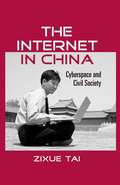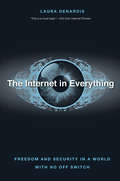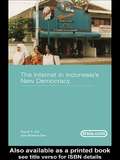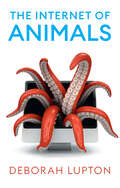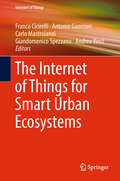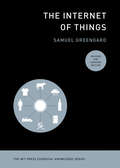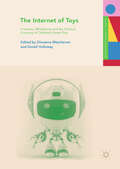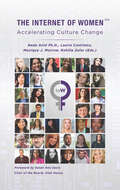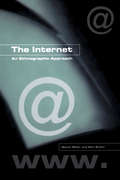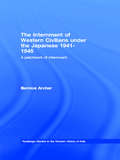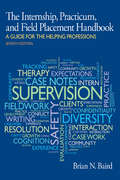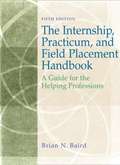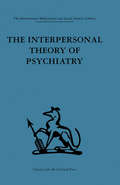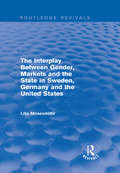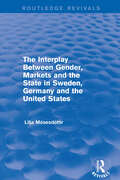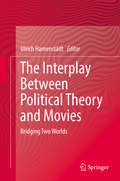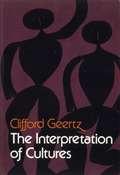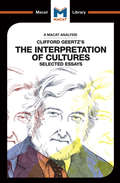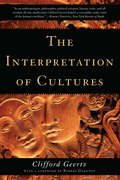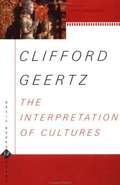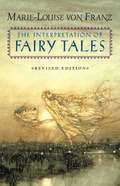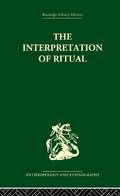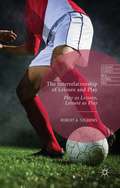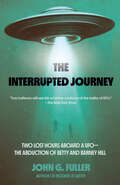- Table View
- List View
The Internet in China: Cyberspace and Civil Society (Routledge Studies in New Media and Cyberculture)
by Zixue TaiThe Internet in China examines the cultural and political ramifications of the Internet for Chinese society. The rapid growth of the Internet has been enthusiastically embraced by the Chinese government, but the government has also rushed to seize control of the virtual environment. Individuals have responded with impassioned campaigns against official control of information. The emergence of a civil society via cyberspace has had profound effects upon China--for example, in 2003, based on an Internet campaign, the Chinese Supreme People's Court overturned the ruling of a local court for the first time since the Communist Party came to power in 1949.The important question this book asks is not whether the Internet will democratize China, but rather in what ways the Internet is democratizing communication in China. How is the Internet empowering individuals by fostering new types of social spaces and redefining existing social relations?
The Internet in Everything: Freedom and Security in a World with No Off Switch
by Laura DeNardisA compelling argument that the Internet of things threatens human rights and security and that suggests policy prescriptions to protect our future The Internet has leapt from human-facing display screens into the material objects all around us. In this so-called Internet of Things—connecting everything from cars to cardiac monitors to home appliances—there is no longer a meaningful distinction between physical and virtual worlds. Everything is connected. The social and economic benefits are tremendous, but there is a downside: an outage in cyberspace can result not only in a loss of communication but also potentially a loss of life. Control of this infrastructure has become a proxy for political power, since countries can easily reach across borders to disrupt real-world systems. Laura DeNardis argues that this diffusion of the Internet into the physical world radically escalates governance concerns around privacy, discrimination, human safety, democracy, and national security, and she offers new cyber-policy solutions. In her discussion, she makes visible the sinews of power already embedded in our technology and explores how hidden technical governance arrangements will become the constitution of our future.
The Internet in Indonesia's New Democracy (Asia's Transformations/Asia.com)
by Krishna Sen David T. HillThe Internet in Indonesia’s New Democracy is a detailed study of legal, economic, political and cultural practices surrounding the provision and consumption of the Internet in Indonesia at the turn of the twenty-first century. Hill and Sen detail the emergence of the Internet into Indonesia in the mid-1990s, and cover its growth through the dramatic economic and political crises of 1997 and the subsequent transition to democracy. Conceptually the Internet is seen as a global phenomenon, with global implications, however this book develops a way of thinking about the Internet within the limits of geo-political categories of nations and provinces. The political turmoil in Indonesia provides a unique context in which to understand the specific local and national consequences of a global, universal technology.
The Internet of Animals: Human-Animal Relationships in the Digital Age
by Deborah Lupton'The internet is made of cats' is a half-jokingly made claim. Today, animals of all shapes and sizes inhabit our digital spaces, from the monitoring of wildlife and feral animals to wearable devices and RFID chips for livestock. In this book, Deborah Lupton explores how digital technologies and datafication are changing our relationships with other animals. Playfully building on the concept of 'The Internet of Things', it discusses the complex relationships and feelings that have developed between people and animals online and through the use of digital devices, from the rapid dissemination of images and information about animals on social media to employing animal-like robots as companions and care devices. It brings together a range of perspectives including sociology, cultural geography, environmental humanities, critical animal studies and internet studies to consider how these new digital technologies are contributing to major changes in human-animal relationships at both the micropolitical and macropolitical levels. As the book shows, while digital devices and media have strengthened people's relationships to other animals, these technologies can also objectify animals as things for human entertainment, therapy or economic exploitation. This original and engaging book will be of interest to scholars and students across the social sciences and humanities.
The Internet of Things (The MIT Press Essential Knowledge series)
by Samuel GreengardA guided tour through the Internet of Things, a networked world of connected devices, objects, and people that is changing the way we live and work.We turn on the lights in our house from a desk in an office miles away. Our refrigerator alerts us to buy milk on the way home. A package of cookies on the supermarket shelf suggests that we buy it, based on past purchases. The cookies themselves are on the shelf because of a “smart” supply chain. When we get home, the thermostat has already adjusted the temperature so that it's toasty or bracing, whichever we prefer. This is the Internet of Things—a networked world of connected devices, objects, and people. In this book, Samuel Greengard offers a guided tour through this emerging world and how it will change the way we live and work.Greengard explains that the Internet of Things (IoT) is still in its early stages. Smart phones, cloud computing, RFID (radio-frequency identification) technology, sensors, and miniaturization are converging to make possible a new generation of embedded and immersive technology. Greengard traces the origins of the IoT from the early days of personal computers and the Internet and examines how it creates the conceptual and practical framework for a connected world. He explores the industrial Internet and machine-to-machine communication, the basis for smart manufacturing and end-to-end supply chain visibility; the growing array of smart consumer devices and services—from Fitbit fitness wristbands to mobile apps for banking; the practical and technical challenges of building the IoT; and the risks of a connected world, including a widening digital divide and threats to privacy and security. Finally, he considers the long-term impact of the IoT on society, narrating an eye-opening “Day in the Life” of IoT connections circa 2025.
The Internet of Things for Smart Urban Ecosystems (Internet of Things)
by Antonio Guerrieri Giandomenico Spezzano Franco Cicirelli Carlo Mastroianni Andrea VinciThe main objective of this book is to provide a multidisciplinary overview of methodological approaches, architectures, platforms, and algorithms for the realization of an Internet of Things (IoT)-based Smart Urban Ecosystem (SUE). Moreover, the book details a set of real-world applications and case studies related to specific smart infrastructures and smart cities, including structural health monitoring, smart urban drainage networks, smart grids, power efficiency, healthcare, city security, and emergency management. A Smart Urban Ecosystem (SUE) is a people-centric system of systems that involves smart city environments, applications, and infrastructures. SUEs require the close integration of cyber and physical components for monitoring, understanding and controlling the urban environment. In this context, the Internet of Things (IoT) offers a valuable enabling technology, as it bridges the gap between physical things and software components, and empowers cooperation between distributed, pervasive, and heterogeneous entities.
The Internet of Things, revised and updated edition (The MIT Press Essential Knowledge series)
by Samuel GreengardA guided tour of the rapidly evolving networked world of connected devices, objects, and people that is changing the way we live and work.Since the publication of the original edition of this volume in the MIT Press Essential Knowledge series, the Internet of Things (IoT) has evolved from a novelty (look! my phone connects to my lamp!) to a mainstream technology framework that we rely on every day to accomplish many tasks. This revised and updated edition reports on the latest developments in this rapidly evolving networked world of connected devices, objects, and people that is changing the way we live and work. Business and technology writer Samuel Greengard takes us on a guided tour of the IoT, describing smart lightbulbs, sensors in phones that trigger earthquake warnings, 3D headsets that connect users to business expos through completely immersive virtual reality environments, and more. He offers a clear explanation of the technology that builds and manages the IoT and examines the growing array of consumer devices now available, from smart door locks to augmented reality fitting rooms. Greengard also shows how the IoT is part of the Fourth Industrial Revolution, which is transforming business through smart manufacturing, end-to-end supply chain visibility, integrated artificial intelligence, and much more. He considers risks associated with the IoT, including threats to free speech, growing inequality, and an increase in cybercrime. Finally, he takes a look at the future of a hyperconnected world and what it means to people and human interaction.
The Internet of Toys: Practices, Affordances and the Political Economy of Children’s Smart Play (Studies in Childhood and Youth)
by Giovanna Mascheroni Donell HollowayThe Internet of Toys (IoToys) is a developing market within our Internet of Things (IoT) ecosystem. This book examines the rise of internet-connected toys and aims to anticipate the opportunities and risks of IoToys before their widespread diffusion. Contributors to this volume each provide a critical analysis of the design, production, regulation, representation and consumption of internet-connected toys. In order to address the theoretical, methodological and policy questions that arise from the study of these new playthings, and contextualise the diverse opportunities and challenges that IoToys pose to educators, families and children themselves, the chapters engage with notions of mediatization, datafication, robotification, connected and post-digital play. This timely engagement with a key transformation in children’s play will appeal to all readers interested in understanding the social uses and consequences of IoToys, and primarily to researchers and students in children and media, early childhood studies, media and communications, sociology, education, social psychology, law and design.
The Internet of Women - Accelerating Culture Change
by Nada Anid; Laurie Cantileno; Monique J. Morrow; Rahilla ZafarFemale scientists, technologists, engineers, and mathematicians worldwide are making historic contributions to their fields. The modern workforce is closer to gender-equal than it has ever been, and many efforts are in place to support further progress. The Internet of Women provides an exciting look at personal narratives and case studies of female leaders and cultural shifts around the globe that illustrate this promising trend. From the United Nations' emphasis on girls and technology education in the SDGs (Sustainable Development Goals) to the increased female labor force in Zambia, a policy change that was inspired by the MDGs (UN Millennial Development Goals), The Internet of Women captures stunning examples of progress from around the world and men working hand in hand with women advocating for cultural change. Scholars and practitioners lament the lack of women leading and working in leading organizations in the technology industry. Gender equality and female participation in the tech field is critical to both developing and developed economies; nevertheless, this gap remains a global phenomenon. The lack of female leadership is particularly extreme at the highest echelons of leading technology organizations. Few publicly traded tech companies have female CEOs - in fact, most nations have zero female leadership in the tech industry. This gap does indicate a slow pace of progress for gender equality in tech employment. Women's pay still lags nearly a decade behind, according to the World Economic Forum, meaning that women's on average pay today is the equivalent to that of similarly qualified and similarly employed men in 2006. Without significant progress, the current rate of change will not lead to parity for 118 years, according to the World Economic Forum (WEF). However there's significant work being done to shift this tide. Take for instance Michelle Lee, the first female Under Secretary of Commerce for Intellectual Property and Director of the United States Patent and Trademark Office (USPTO), reflects on her childhood Girl Scout badge in sewing and cooking and how that memory inspired to create an IP badge that exposes young women to the process of invention. Social entrepreneur, investor, and Malala Fund co-founder Shiza Shahid shares her efforts beginning from mentoring young women in Pakistan to her current work directing more investment to women innovators around the globe. And Elizabeth Isele, a senior fellow in Social Innovation at Babson College, shares her research on women and ageism saying we need to retire the word retirement. The book is divided into six parts, each with unique areas of focus:• Millennials Leading: Exploring Challenges and Opportunities Facing the Next Generation of Women in Technology• Men and Women Empowering One Another• Bold Leadership: Women Changing the Culture of Investment and Entrepreneurship• Educating for the 21st Century• Breaking the Glass Ceiling: A Generation of Women Forging into Technology Leadership• Emerging Fields of TechnologyThe Internet of Women gathers examples about the increasingly inclusive and progressive gender culture in technology from over 30 countries. Stories range from an entrepreneur in Dubai partnering with private and public sector entities to accelerate blockchain technology to a young British woman moving to Silicon Valley to launch an artificial intelligence platform and incubator. The book is intended for corporations, academic institutions, the private sector, government agencies, gender experts, and the general public, and its key benefit is to let the reader understand a path towards implementing diversity overall globally. It also showcases the strategies, tools, and tactical execution on how create cultural change in all parts of the world.
The Internet: An Ethnographic Approach
by Daniel Miller Don SlaterThis pathbreaking book is the first to provide a rigorous and comprehensive examination of Internet culture and consumption. A rich ethnography of Internet use, the book offers a sustained account not just of being online, but of the social, political and cultural contexts which account for the contemporary Internet experience. From cybercafes to businesses, from middle class houses to squatters settlements, from the political economy of Internet provision to the development of ecommerce, the authors have gathered a wealth of material based on fieldwork in Trinidad. Looking at the full range of Internet media -- including websites, email and chat -- the book brings out unforeseen consequences and contradictions in areas as varied as personal relations, commerce, nationalism, sex and religion. This is the first book-length treatment of the impact of the Internet on a particular region. By focusing on one place, it demonstrates the potential for a comprehensive approach to new media. It points to the future direction of Internet research, proposing a detailed agenda for comparative ethnographic study of the cultural significance and effects of the Internet in modern society. Clearly written for the non-specialist reader, it offers a detailed account of the complex integration between on-line and off-line worlds. An innovative tie-in with the book's own website provides copious illustrations amounting to over 2,000 web-pages that bring the material right to your computer.
The Internment of Western Civilians under the Japanese 1941-1945: A patchwork of internment (Routledge Studies in the Modern History of Asia)
by Bernice ArcherBernice Archer's comparative study of the experiences of the Western civilians interned by the Japanese in mixed family camps and sexually segregated camps in the Far East, combines a wide variety of conventional and unconventional source material. This includes contemporary War, Foreign and Colonial Office papers, diaries, letters, camp newspapers and artefacts, post-war medical, engineering and educational reports, biographies, autobiographies, memoirs and over fifty oral interviews with ex-internees. Using contemporary personal accounts, the shock of the Japanese victories and the devastating experience of capture are highlighted. This book also covers wider issues such as the role of women in war, gender and war, children and war, colonial culture, oral history, and war and memory.
The Internship, Practicum, and Field Placement Handbook
by Brian N. BairdThe Internship, Practicum, and Field Placement Handbook, Seventh Edition is a practical guide to the real world knowledge and skills that students need when they begin working in the field of mental health. This text guides interns through every phase of the internship process from finding placements to concluding relationships with clients and supervisors. Along the way students learn about ethics, clinical writing and record keeping, working with peers and supervisors, understanding diversity, and self care and safety. Following an evidence and competency based approach, the latest research findings are reviewed from the fields of psychology, social work and counseling. "
The Internship, Practicum, and Field Placement Handbook: A Guide for the Helping Professions (3rd edition)
by Brian N. BairdStudents, instructors, and field supervisors in the helping professions can use this book as a resource on performing responsibly and safely in field placements. Ethical and legal principles, record keeping, report writing, supervision, diversity, and dealing with dangerous clients are covered in detail in an accessible style. Appendices provide forms for field learning agreements, evaluation, and informed consent. This third edition adds new exercises and incorporates new discussions of managed care, student portfolios, and career planning.
The Interpersonal Theory of Psychiatry
by Harry Stack SullivanTavistock Press was established as a co-operative venture between the Tavistock Institute and Routledge & Kegan Paul (RKP) in the 1950s to produce a series of major contributions across the social sciences. This volume is part of a 2001 reissue of a selection of those important works which have since gone out of print, or are difficult to locate. Published by Routledge, 112 volumes in total are being brought together under the name The International Behavioural and Social Sciences Library: Classics from the Tavistock Press. Reproduced here in facsimile, this volume was originally published in 1955 and is available individually. The collection is also available in a number of themed mini-sets of between 5 and 13 volumes, or as a complete collection.
The Interplay Between Gender, Markets and the State in Sweden, Germany and the United States
by Lilja MosesdottirThis title was first published in 2001. The development of gender relations during the post-war period in Sweden, Germany and the US forms the core of this work. It looks at the hierarchical relations between men and women based on economic, political, social and biological differentiations. The analytical focus is primarily on how actors, cultural norms and institutional arrangements interrelate and affect the relative position of men and women to create patterns/forms of gender relations that vary across countries and change through time. The main advantages of a comparative study is that it highlights the differences and similarities of the countries being compared. This book argues that social blocks involving a stable system of relations that have challenged and become embedded into institutional arrangements are the main force creating differences in the patterns of gender relations across the countries.
The Interplay Between Gender, Markets and the State in Sweden, Germany and the United States (Routledge Revivals)
by Lilja MosesdottirThis title was first published in 2001. The development of gender relations during the post-war period in Sweden, Germany and the US forms the core of this work. It looks at the hierarchical relations between men and women based on economic, political, social and biological differentiations. The analytical focus is primarily on how actors, cultural norms and institutional arrangements interrelate and affect the relative position of men and women to create patterns/forms of gender relations that vary across countries and change through time. The main advantages of a comparative study is that it highlights the differences and similarities of the countries being compared. This book argues that social blocks involving a stable system of relations that have challenged and become embedded into institutional arrangements are the main force creating differences in the patterns of gender relations across the countries.
The Interplay Between Political Theory and Movies: Bridging Two Worlds
by Ulrich HamenstädtThis book presents essays and scientific contributions examining the link between popular media and politics. The essays focus on the question of how political and social change, concepts of power, and utopian elements are reflected in selected films and television series. The book applies a political science perspective, covering theories from political philosophy, political sociology and international relations, and examines a wide range of movies and TV series, such as The Godfather, Fight Club, The Walking Dead and Game of Thrones. It will appeal to anyone interested in studying how political ideas, concepts and messages can be illustrated and visualized using the complex media of movies and TV series.
The Interpretation Of Cultures
by Clifford GeertzIn The Interpretation of Cultures, the most original anthropologist of his generation moved far beyond the traditional confines of his discipline to develop an important new concept of culture. This groundbreaking book, winner of the 1974 Sorokin Award of the American Sociological Association, helped define for an entire generation of anthropologists what their field is ultimately about.
The Interpretation of Cultures
by Abena Dadze-ArthurClifford Geertz has been called ‘the most original anthropologist of his generation’ – and this reputation rests largely on the huge contributions to the methodology and approaches of anthropological interpretation that he outlined in The Interpretation of Cultures. The centrality of interpretative skills to anthropology is uncontested: in a subject that is all about understanding mankind, and which seeks to outline the differences and the common ground that exists between cultures, interpretation is the crucial skillset. For Geertz, however, standard interpretative approaches did not go deep enough, and his life’s work concentrated on deepening and perfecting his subject’s interpretative skills. Geertz is best known for his definition of ‘culture,’ and his theory of ‘thick description,’ an influential technique that depends on fresh interpretative approaches. For Geertz, ‘cultures’ are ‘webs of meaning’ in which everyone is suspended. Understanding culture, therefore, is not so much a matter of going in search of law, but of setting out an interpretative framework for meaning that focuses directly on attempts to define the real meaning of things within a given culture. The best way to do this, for Geertz, is via ‘thick description:’ a way of recording things that explores context and surroundings, and articulates meaning within the web of culture. Ambitious and bold, Geertz’s greatest creation is a method all critical thinkers can learn from.
The Interpretation of Cultures
by Clifford Geertz Robert DarntonIn The Interpretation of Cultures, the most original anthropologist of his generation moved far beyond the traditional confines of his discipline to develop an important new concept of culture. This groundbreaking book, winner of the 1974 Sorokin Award of the American Sociological Association, helped define for an entire generation of anthropologists what their field is ultimately about.
The Interpretation of Cultures: Selected Essays
by Clifford GeertzIn The Interpretation of Cultures, the most original anthropologist of his generation moved far beyond the traditional confines of his discipline to develop an important new concept of culture. This groundbreaking book, winner of the 1974 Sorokin Award of the American Sociological Association, helped define for an entire generation of anthropologists what their field is ultimately about.
The Interpretation of Fairy Tales: Revised Edition
by Marie-Louise von FranzOf the various types of mythological literature, fairy tales are the simplest and purest expressions of the collective unconscious and thus offer the clearest understanding of the basic patterns of the human psyche. Every people or nation has its own way of experiencing this psychic reality, and so a study of the world's fairy tales yields a wealth of insights into the archetypal experiences of humankind.Perhaps the foremost authority on the psychological interpretation of fairy tales is Marie-Louise von Franz. In this book—originally published as An Introduction to the Interpretation of Fairy Tales —she describes the steps involved in analyzing and illustrates them with a variety of European tales, from "Beauty and the Beast" to "The Robber Bridegroom."Dr. von Franz begins with a history of the study of fairy tales and the various theories of interpretation. By way of illustration she presents a detailed examination of a simple Grimm's tale, "The Three Feathers," followed by a comprehensive discussion of motifs related to Jung's concept of the shadow, the anima, and the animus. This revised edition has been corrected and updated by the author.
The Interpretation of Ritual
by J S La FontaineFirst published in 1972. A revival of interest in primitive religion has been one of the most marked characteristics of British social anthropology of recent years. Inspired by the work of Audrey Richards, whose writing on ritual contains many of the insights that have been developed in later studies, this volume uses material drawn from all over Africa and Polynesia. The contributors include: Raymond Firth, Esther Goody, Aidan Southall, R.G. Abrahams, Edwin Ardener, J.S. La Fontaine, Monica Wilson, Elizabeth Bott, Edmund Leach and P.H. Gulliver.
The Interrelationship of Leisure and Play: Play As Leisure, Leisure As Play (Leisure Studies in a Global Era)
by Robert StebbinsIn the scientific studies of play and leisure there has been an unfortunate tendency for the enthusiasts of one to ignore the contributions made by their colleagues in the other. This book shows what the two fields have been missing because of this isolation. The new idea of augmentative play enables us to examine how and where play and leisure are often vitally dependent on each other. Augmentative play is a special activity that aids substantially the pursuit of a larger, encompassing leisure activity. This approach to the study of play is unique. It recognizes the hundreds of activities in which play and leisure come together, sometimes to produce deeply fulfilling experiences and outcomes for participants, other times to produce more fleeting enjoyment for them.
The Interrupted Journey: Two Lost Hours Aboard a UFO: The Abduction of Betty and Barney Hill (The\interrupted Journey Ser.)
by John FullerTWO LOST HOURS ABOARD A UFO—THE ABDUCTION OF BETTY AND BARNEY HILL • One of the most extraordinary UFO tales of our time—a thrilling, otherworldly, and wildly entertaining adventure that enraptured America and stands as the quintessential extraterrestrial encounter"True believers will see this as further evidence of the reality of UFOs" —The New York Times On a summer night in 1961, Betty and Barney Hill were driving home through New Hampshire when a bright object appeared in the sky and began following them. When the couple finally pulled over to get a better look, the object vanished before their eyes. With nothing else to do, Betty and Barney returned to their car and kept driving into the night. The encounter left them rattled, but what came next was even more arresting: the following day, the Hills realized they couldn&’t remember anything from almost two hours of their drive. Time itself had disappeared, so the couple began looking for help, hoping to uncover what happened that mysterious night. Captivating and unputdownable, The Interrupted Journey is the complete story of those missing hours and the Hills&’ nearly identical accounts, as revealed to doctors under psychotherapy and hypnosis. It stands as one of the most extraordinary UFO tales of our time. Thrilling, otherworldly, and wildly entertaining, The Interrupted Journey is an adventure that enraptured America and stands as the quintessential extraterrestrial encounter.
